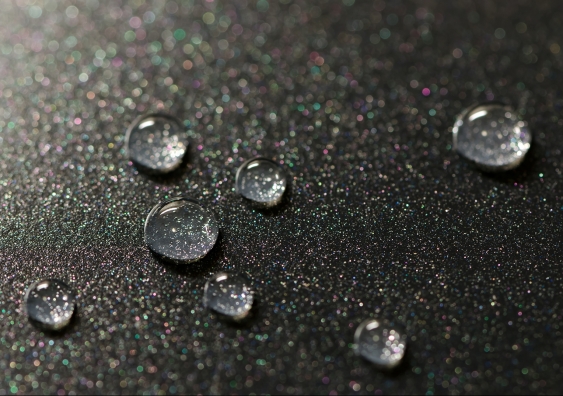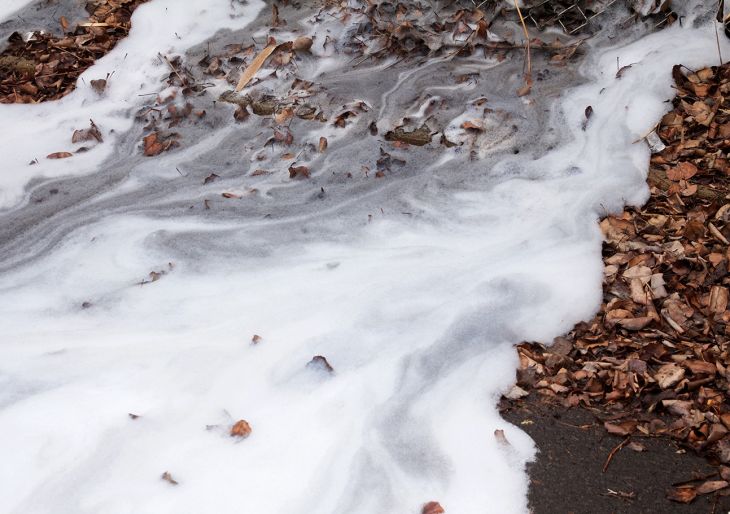Per- and polyfluoroalkyl substances (PFAS) can be found almost everywhere and in almost everyone and can take over 1000 years to break down.
PFAS have been used since the 1950s in a range of common household products and in some specialty applications including non-stick cookware, carpets and even makeup. Image: Shutterstock
What do food packaging, carpeting, non-stick cookware, makeup and clothing all have in common?
They all often contain a synthetic group of chemicals known as PFAS.
PFAS stands for Per- and polyfluoroalkyl substances and describes a group of over 10,000 industrial chemicals that are widely found in everyday goods. Being resistant to heat, stains, grease, and water, PFAS are commonly used as surface-treatments in non-stick cookware and solution treatment in carpets. Because of these properties, they were extensively used in firefighting foams, too.
Professor Denis O’Carroll, Managing Director of the Water Research Laboratory at UNSW Sydney, says it’s hard to think of an application that doesn’t use the popular chemicals.
“The average person doesn’t realise how much PFAS are found in everyday products. You can find it in food packaging to limit the amount of grease soaking through our burgers or to improve stain resistance in chairs and rugs,” he says.
“It’s also believed that low traces of PFAS can be found in the bloodstream of 98 per cent of the world’s population.
“And just like it’s in our bodies, it’s also found in our water supply, too.
“In Australia, the historical use of PFAS in firefighting foams has resulted in increased levels of the chemical being detected near airports, defence bases or any site where firefighting training has been conducted.
“Over time, the chemicals have worked their way across and through the soil to contaminate surface and groundwater in those areas. As a result, PFAS have also entered waste streams including wastewater treatment facilities and landfills in and surrounding those areas.”
Why are PFAs a problem?
Over the years, there has been growing concern about these chemicals because they do not break down easily on their own.
Dubbed the ‘forever chemicals’, PFAS are extremely persistent in our environment, humans and animals too – with many of the chemicals taking over 1000 years to break down.
For humans, the main form of exposure to PFAS is ingestion of food and water sources that have been contaminated.
As a result, various state governments across Australia recommend people should limit their exposure to PFAS as much as it’s practical while more evidence is needed to determine the long-term health impact on humans.
A UNSW water expert, Professor Stuart Khan, recognises that’s easier said than done. He says PFAS are both environmentally and temperature resilient and once in the environment, they are very hard to eliminate.
“A lot of chemicals that we traditionally think about as pollutants, such as pesticides, get absorbed into the soil and tend to pollute one area and that area stays polluted,” he says.
“However, PFAS are very mobile in the environment. So, we end up having contaminated drinking water suppliers in locations where PFAS may not have contaminated the groundwater initially but just where it’s ended up because they don’t break down.”

PFAS are heat, water and grease resistant and commonly used to make non-stick cookware. Image: Shutterstock
Regulating PFAS in our community
To help regulate this, government bodies such as Food Standard Australia and New Zealand and National Health and Medical Research Council have set health-based guidance values (HBGVs) indicating the amount of a chemical a person can consume on a regular basis over a lifetime without any significant risk to their health.
In Australia, the drinking water quality HBGV for PFOA, a regulated chemical within the PFAS classification, is set at 560 nanograms per litre. In comparison, just last week the United States Environmental Protection Agency (EPA) announced the proposed National Primary Drinking Water Regulation – putting forward a new Maximum Contaminant Level of four nanograms per litre of PFOA in drinking water.
While the proposal is still subject to public consultation, if successful it would mark the first time in 26 years that the EPA set legal limits for a contaminant in drinking water. It would also be a significant reduction from the previous limit of 70 nanograms per litre.
Prof. Khan says these values are a moving target as Australia tries to keep up with the United States EPA and similar agencies across Europe.
“It’s hard for Australia to keep up with these values as they seem to get lower and lower every year,” he says.
“But there is a rigorous process to keep monitoring these values and we take on a balance-of-evidence approach. If there was really compelling evidence that we need to update the guidelines, then we will do it.”
Can we clean up PFAS?
Globally, there is a movement to limit and phase out the use of some forms of PFAS. However, that doesn’t address the issue of the large amounts still found in our environment today.
Some studies have reported that even in one of the world’s most remote locations such as Antarctica, concentrations of PFAS have exceeded some of the most stringent health-based values, says Prof. Khan.
He says while it’s not impossible to clean up the substances, it’ll be a question of whether governments would want to invest the amount of energy, carbon footprint and money to do so.
“Current water remediation processes might not be sufficient as there is still the problem of what to do with the PFAS once it’s been extracted,” he says.
“If you consider our water treatment processes for a contaminated groundwater site, we can use membranes or ion exchange resins to separate PFAS from the water – leaving you with clean water.
“But you end up with PFAS as a waste stream which is still a massive problem.
“You could bury it in the ground, but it’ll still end up in your groundwater supply which is where the problem started in the first place.”
While there are incineration processes to destroy PFAS, it would require a massive investment of energy and money – and come at the cost of producing more greenhouse gas emissions.
“It’s very difficult to develop a treatment process that actually destroys the PFAS because most likely you’re producing smaller fluorinated compounds that will end up in the atmosphere anyway,” says Prof. Khan.
“Plus, we would need to factor in how much extra carbon footprint we’ll be contributing if we were serious about going down this path.”
Next generation chemicals
Prof. O’Carroll says just because we can use PFAS, doesn’t mean we should.
“We probably don’t need to use all these anthropogenic chemicals as much as we do,” he says.
“As modern consumers, if we really want to limit our use of PFAS, we need to do our research and look into what products are made from because there is PFAS in a lot of things that you wouldn’t even consider.”
There’s also still the question of finding a safe yet effective substitute for PFAS.
Prof. Khan says there is rapid development of alternative chemicals which are still in the per-fluorinated group – they’re just a different kind to the ones presently regulated in the market.
“We’re seeing the emergence of the ‘next generation of chemicals’ which are moving away from acid-based and sulphate-based chemicals,” he says.
“However, the caveat is that we don’t know what the long-term impact of these newer chemicals is going to be 10 years down the track. It may end up causing just as many problems as the ones we’re dealing with now.”







